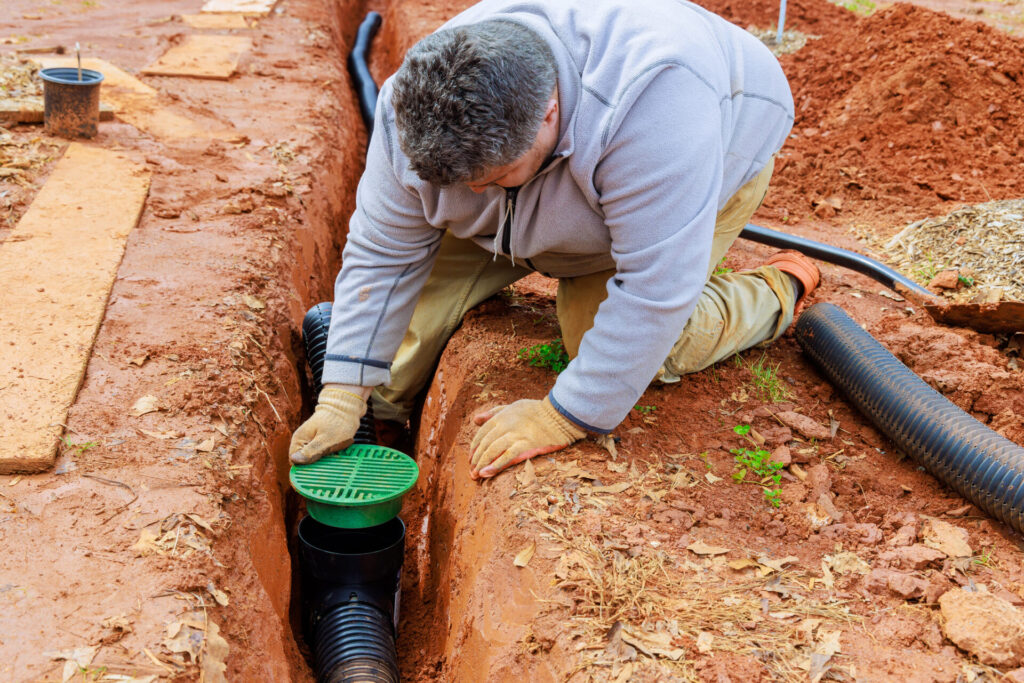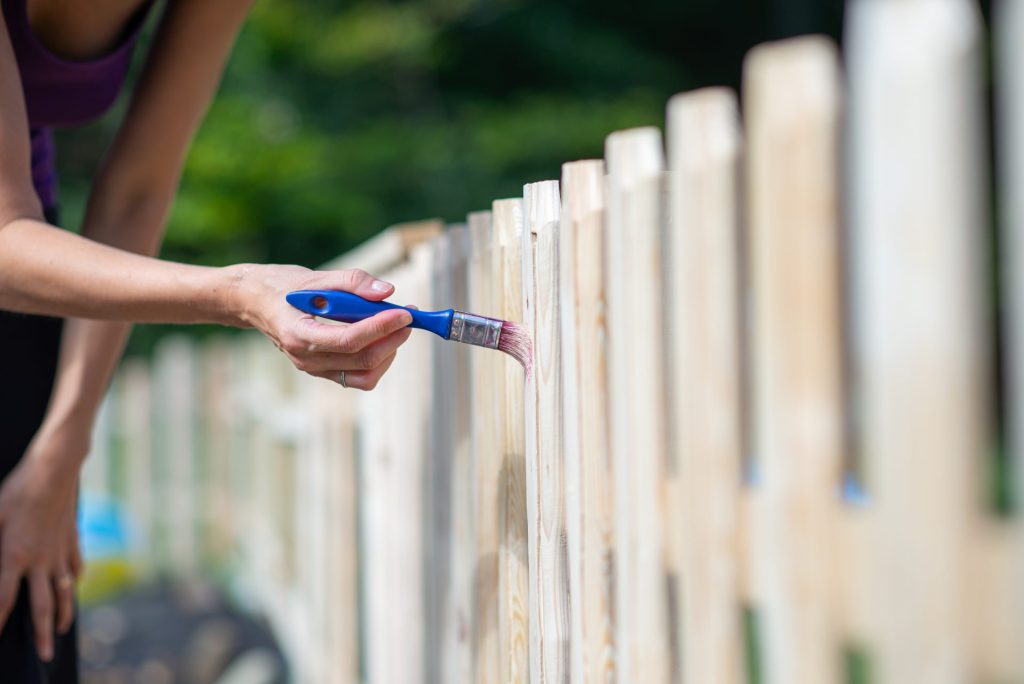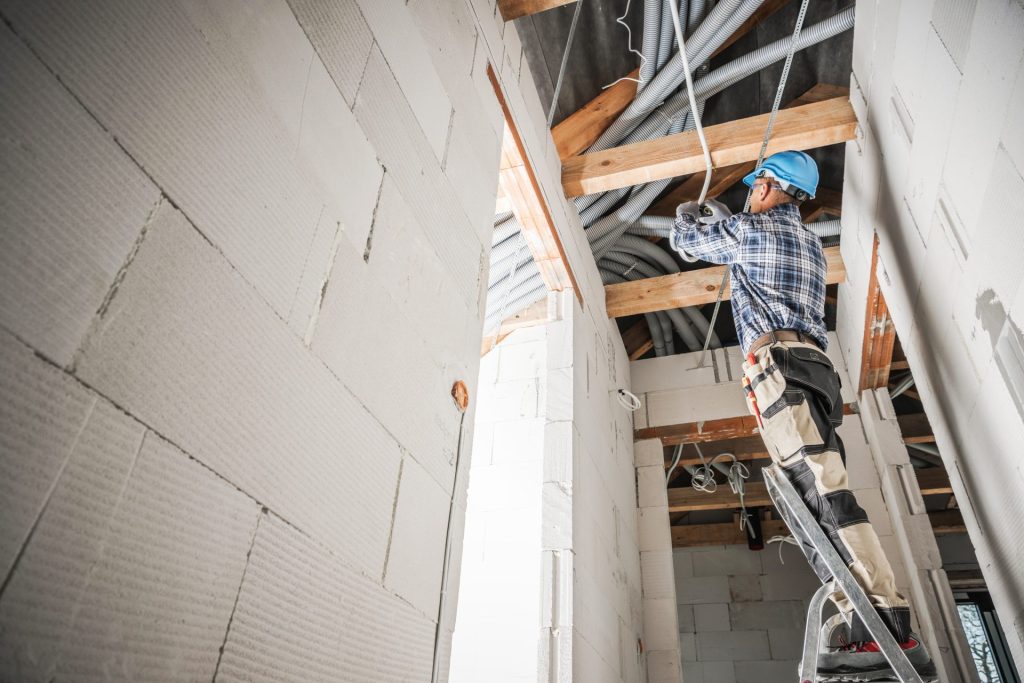What Are the Steps of a Good Concrete Pour for a Residential Property?
Concrete is one of the most popular materials used in construction today due to its durability and affordability. The material is a composite of coarse aggregate (such as gravel or crushed stone), fine aggregate (such as sand), cement, and water. In a residential setting, concrete can be used for several different applications, including the creation of driveways, sidewalks, floors, walls, and more. When properly installed and cared for, concrete typically lasts for decades with only minimal maintenance.
Installing residential concrete can be challenging, not least of all because every concrete pour is different from the last. Prior to pouring concrete, one must consider the size of the job, its shape, color, finish, and complexity.
Before pouring concrete, the site must be properly prepared to reduce the chance of ‘heaving’ from soil and frost. On smaller projects, you may be able to use hand tools to clear the area of objects like rocks, tree stumps, shrubs, grass, and old concrete in order to expose the bare earth beneath. For larger pours, earth-moving equipment may be necessary.
Once the subbase has been prepared, forms can be set. For most residential concrete projects, we recommend using wood forms with metal or wood stakes.
In many situations, concrete must be mixed. For small slabs of concrete and smaller projects, you may be able to use a wheelbarrow and shovel. However, the use of a concrete mixer makes the process much easier. Alternatively, your concrete could arrive in a ready-mixed truck, with the drum on the back of the truck spinning continuously to keep the concrete from getting hard.
Wet concrete must be poured into the forms until they are full to the top edge. While pouring, use shovels and rakes to move the concrete and ensure that there are no air pockets.
Screed the top of the concrete using a large metal or wood board. Screeding helps compact the composite and consolidate the concrete. It also begins smoothing and leveling.
Once troweling has been completed, it is time to apply a final finish to the concrete. The most basic type of finish for residential concrete projects is a broom finish.
Finally, let the concrete rest and begin to cure. The curing process can last four weeks, but the first 48 hours are essential. During this time, apply a chemical curing and sealing compound slowly and evenly to the residential concrete. This will help reduce cracks, surface discoloration, and curling.
What Tools May Be Necessary for Excellent Residential Concrete Installation?
Concrete projects require many tools and pieces of equipment. Some may be commonplace tools, while others are more specialized for the job at hand.
Your residential concrete projects may require the following tools:
- Broom finishing tool
- Bull float
- Circular saw
- Concrete placer tools
- Form lumber and panels
- Garden hoses with spray nozzles
- Half inch edgers
- Hammers
- Kneeboards
- Leveling tools
- Magnesium floats
- Marking tools
- Mason’s line
- Rebar
- Reinforcing steel
- Relief joint tools
- Shovels and rakes
- Stakes
- Tape measurer
- Tie wire
- Trowels
- Wheelbarrows
- And more
What Are Some Tips for Residential Concrete Installation?
Perhaps our favorite piece of advice is to rely upon the experience of others who have done similar projects before. With that in mind, our contractors have years of experience providing clients with excellent installation and maintenance for their residential concrete projects.
Please contact us to schedule a consultation, during which we will provide a free estimate for your project.
Tips for a successful insulation include:
- Before setting your forms, apply a release agent to the form material
- Consider using screws instead of duplex nails to connect your form materials
- Do not drive your screws from the concrete side of the form boards
- Set trench drains the day before to keep them from floating during the initial pour
- Smooth out your subgrade when doing flat work, as variations in the slab’s thickness may cause unwanted cracks
- Try using wood stakes. Stakes can be hard to remove after pouring a footing. If you cannot remove a wood stick, it’s not as big of a loss
Did You Use a Concrete Sealer?
Sealing your concrete can help extend its lifespan and keep it looking good and new.
But remember, not all concrete sealers are created equally. Different types of sealers are available for different types of projects. You need to choose the concrete sealer most suitable to your project needs.
A sealer should be applied every two to three years to hold the color and protect the concrete.
Are You Using Appropriate Ice Melters?
We know the winters can be harsh here. While using de-icing chemicals to melt snow and ice may be the safest thing for you and your family, using these chemicals and salts can severely damage your concrete surface.
You must find deicing chemicals safe for concrete driveways, sidewalks, and walkways. Our team would be happy to lend assistance.
How Often Should Concrete Be Maintained?
The frequency of concrete maintenance for residential projects depends greatly upon the age of the material and the environment in which it is being utilized. We recommend cleaning your concrete at least once a year. Additional maintenance may be required occasionally as well.
In areas with high concentrations of pollutants or hazardous weather conditions, more frequent upkeep and maintenance may be necessary to keep the concrete looking good.
When Should Cracks in the Concrete Be Repaired?
If you have detected cracks or damage in your concrete driveway, walkway, or patio, you must repair them as soon as possible to prevent the damage from spreading or deteriorating.
If your concrete has small cracks, you can easily repair them with concrete caulking. A concrete patching kit can be used to repair larger cracks.
If your concrete appears to be sinking, leveling it again with slabjacking is possible.
Are You Watching Your Weight?
Concrete has a reputation for being extremely strong and durable, but it has its limits. For example, your driveway may be capable of handling the weight of your everyday motor vehicle. However, it is not suited for handling the weight of heavy machinery and oversized vehicles like delivery trucks or dumpsters.
If possible, ask heavy machinery, oversized vehicles, and dumpsters to be left in the street.
What Residential Concrete Services Does Our Business Provide?
Our contractors strive to provide our customers excellent service in various areas of need. We can be called upon to help you with your residential concrete installation or maintenance project, whatever that may be.
Our residential concrete services include:
- Concrete driveways
- Concrete flooring
- Concrete foundation
- Concrete loading docks
- Concrete parking lots
- Concrete patios
- Concrete paving
- Concrete repairs and maintenance
- Concrete sidewalks and walkways
- Concrete walls
Contact Us to Talk with Our Knowledgeable Team Today
Concrete may be a very common building material, but that doesn’t mean it is easy to install or maintain. While we are happy to provide tips and tricks on installing and properly maintaining your residential concrete, we also strongly recommend that you seek professional help from experienced residential concrete contractors.
Hauser Contractors proudly serves clients across Pennsylvania in their residential concrete projects. To learn more about our services, please contact our contractors to discuss your job and receive a free estimate.
You may reach us at 610-510-6020.


 CALL US NOW
CALL US NOW EMAIL US NOW
EMAIL US NOW










